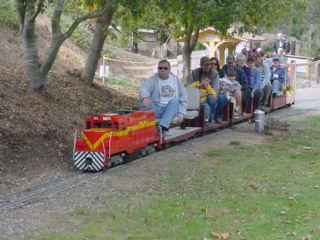
Waking up and feeling better, Chris Parker and I checked out of the Motel 6 and drove to IHOP for a good breakfast of a waffle and sausage links then drove to Arroyo Grande. The Mapquest directions did not match the map I had printed but we found the road and following the map, reached our destination.
The Bitter Creek Western Railroad 10/11/2009The Bitter Creek Western Railroad is a 7.5-inch gauge railroad located on the Nipomo Mesa just outside Arroyo Grande, about halfway between Los Angeles and San Francisco along Highway 101. The railroad includes 1.2 miles of mainline with many sidings and two rail yards. The facilities include fourteen steaming bays, hydraulic lift and turntable. A 14 x 80 foot car barn, three bridges, three trestles and three tunnels can be found along the way. Most mainline switches are motorized with spring points. There are six water sources amongst the trees, shrubs and flowers.
All on 7+ acres, the Bitter Creek Western Railroad is owned by Karl Hovanitz. Karl bought the BCWRR from Doug Chancey in June 1999. Doug began the BCWRR in 1984. The BCWRR is not a club or other formal organization. It is owned and operated by Karl Hovanitz for the benefit of all his friends that like to play trains. It's a place where friends can meet and share a common joy and passion - railroading!
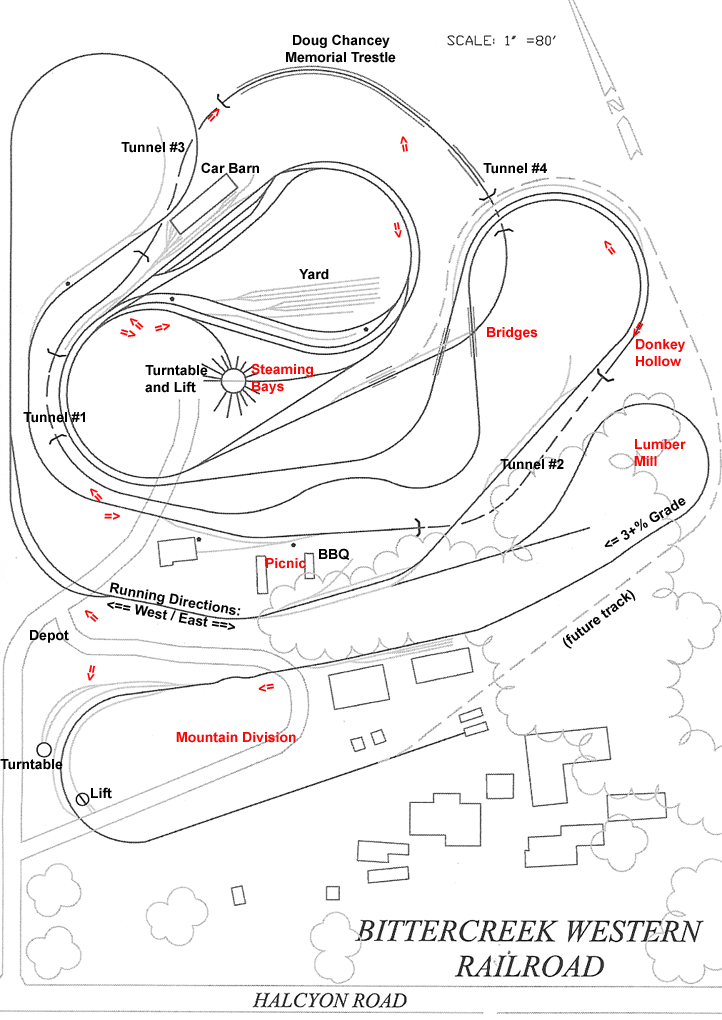
The track layout of the railroad.
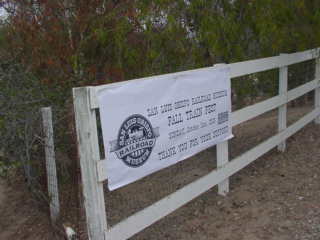
This sign greeted us to the Bitter Creek Western Railroad event for the Central Coast Railroad Festival.
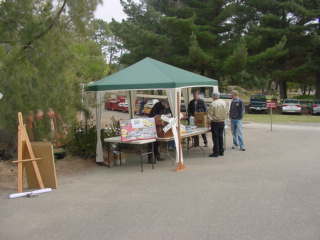
The table were we checked in and met the staff.
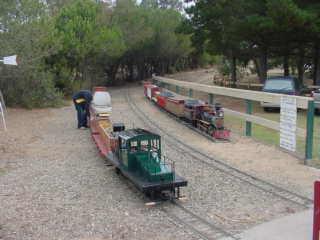
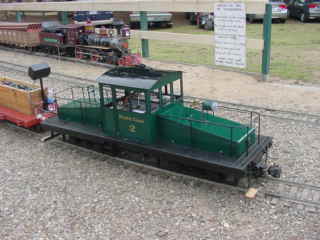
This train would be the one we would be riding. It is a scale model of Pacific Coast Railway's E-2, an 0-4-4-0 gear-driven electric locomotive built by the railway in 1908/09 and used to haul passengers and freight (mostly sugar beets) between Santa Maria and Guadalupe. This stretch of the PCRy was one of very few 36" gauge electrified railroads in the country. It originally used the wooden cab from PCRy's No. 103 steam locomotive, but that was later replaced with a steel cab. E-2 was scrapped in 1938.
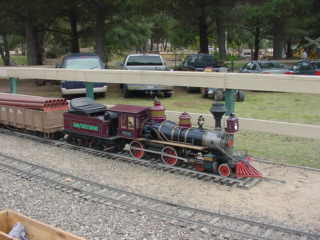
The display train features Central Pacific 173. Harry Laws of King City began this locomotive project in 1973 with about 60 percent of the parts delivered in "a kit". The completion of the project was made possible by pulling in a handful of HO enthusiasts who wanted a shot at "something bigger". The prototype 4-4-0 was the first loco built by the Sacramento CPRR facilities. Well, it was actually a rebuild from a wrecked engine. The CPRR built 12 more of these over the years, one of which, 18, is on display at the Nevada State Railroad Museum in Carson City, Nevada. It's 1.5" scale. This is the same loco prototype that ran around Walt Disney's house, and were Nos. 1 and 2 on the Disneyland Railroad.
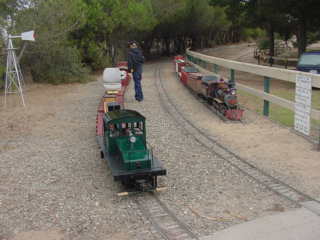
Our train and the display train.
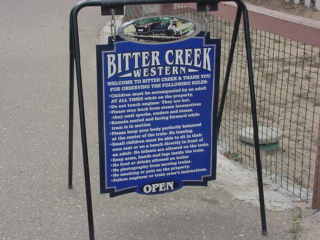
The Rules of the Bitter Creek Western Railroad.
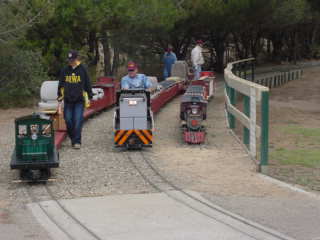
The line-up of trains. At 10:00 AM, Chris Parker and I were on the first trip of the day and received special permission to take pictures from the moving train. After a safety talk, we soon were off for our ride.
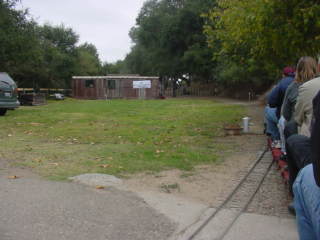
Looking towards the picnic area as we left the boarding area.
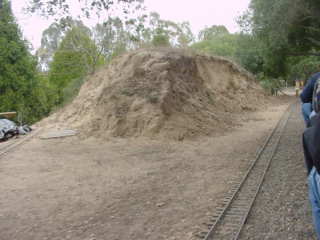
A mound of dirt.
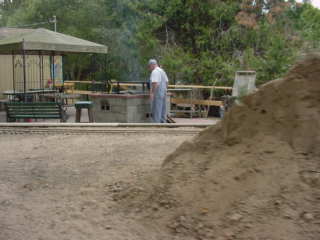
The barbecue pit.
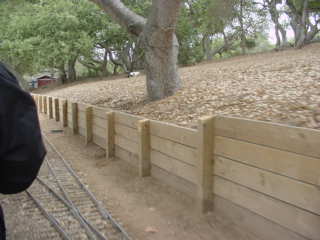
Retaining wall.
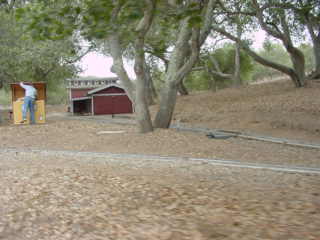
View along our route.
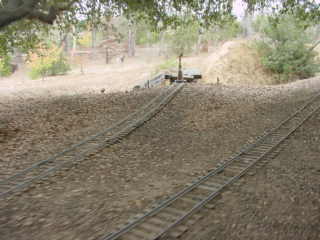
A siding.
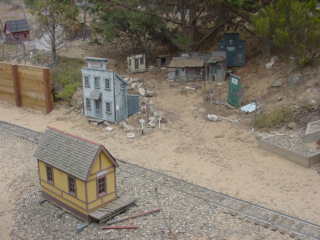
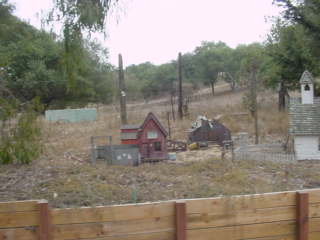
Miniature buildings.
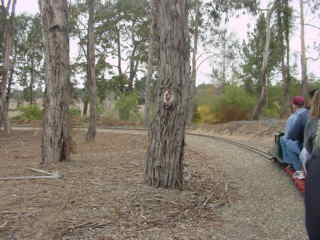
Taking a curve.
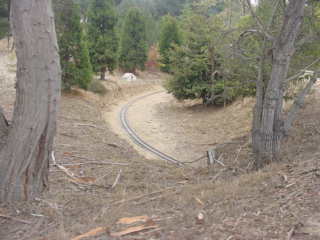
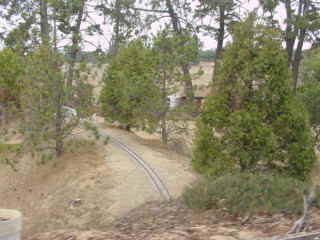
More tracks below us.
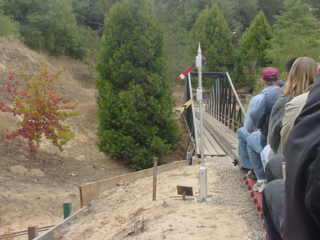
Getting ready to cross this bridge.
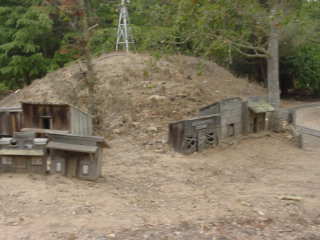
More miniature buildings.
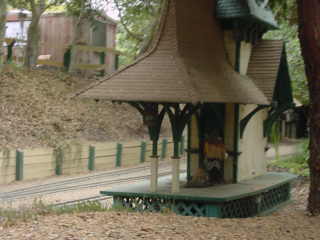
The Chancey Junction station.
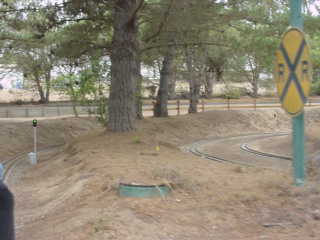
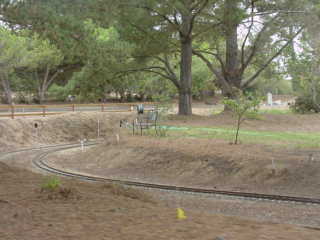
Two views of this unique railroad.
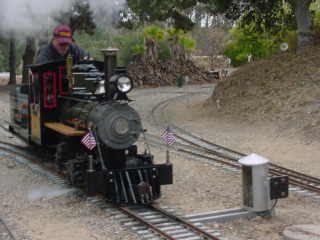
Look at this beautiful steam engine.
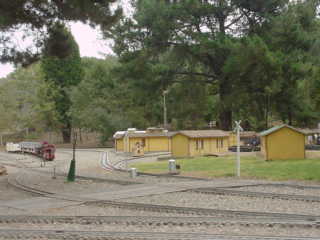
The turntable and lift.
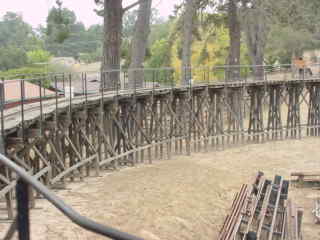
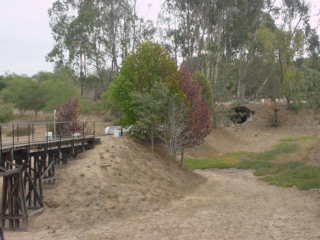
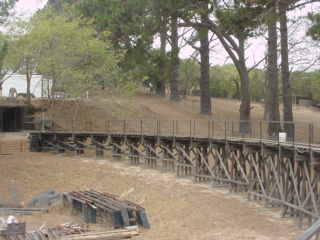
We crossed the Doug Chancey Memorial Trestle.
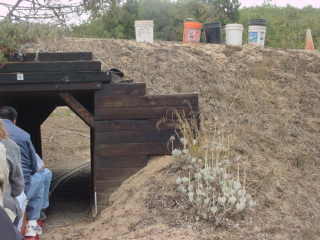
Our train entered Tunnel 4.
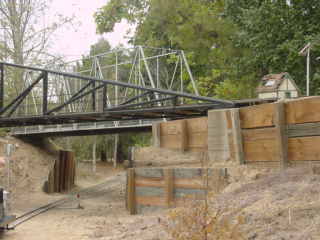
Next we passed under the twin bridges.
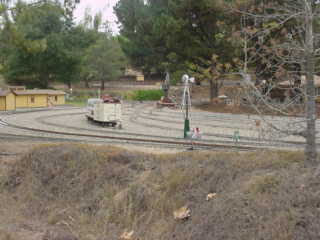
The yard.
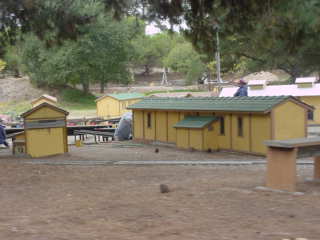
The turntable and lift from a different angle.
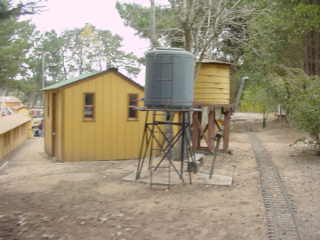
Water towers.
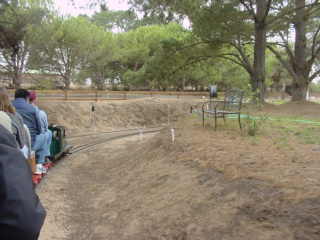
Rounding another curve.
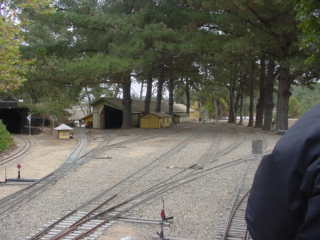
Car barn.
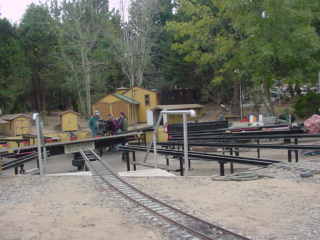
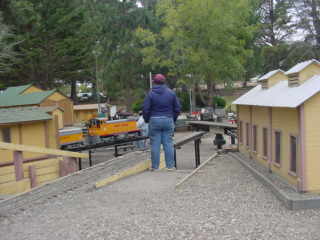
The turntable and lift.
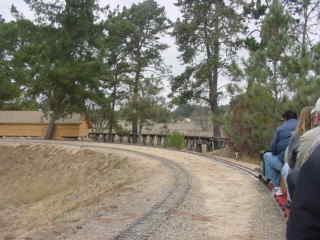
Our train takes another of this railroad's many curves.
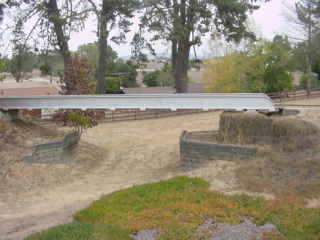
The bridge just before Tunnel 4.
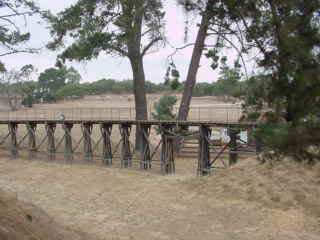
The Doug Chancey Memorial Trestle.
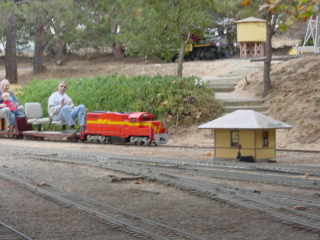
Santa Maria Valley Railroad diesel 1801, built by Rail Systems Company in Portland, Oregon, hauls another happy train of passengers.
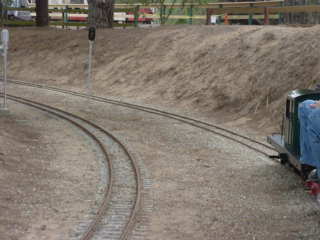
Curving towards a block signal.
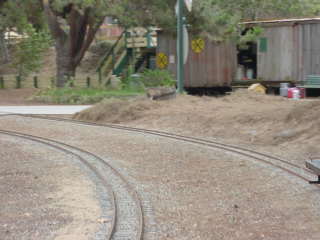
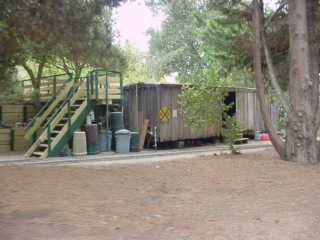
A storage shed made out of a box car.
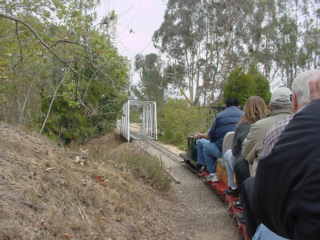
Our train heads for one of the line's bridges.
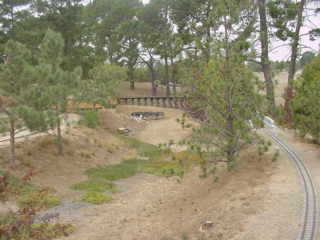
The Doug Chancey Memorial Trestle.
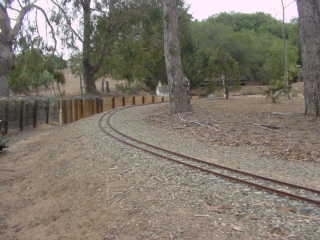
Another of the line's curves.
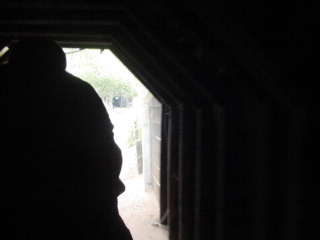
Exiting Tunnel 1.
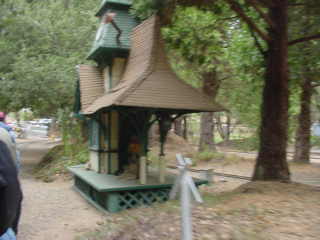
Chancey Junction station from a different angle.
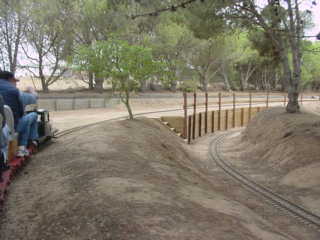
Our train took yet another curve.
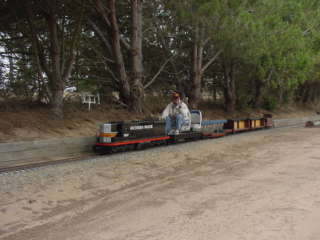
Southern Pacific Black Widow diesel X-1 pulling and empty train. The original was built General Electric and was also known as the "Little Giant". It served the Southern Pacific from 1954 until 1960 in the Owens Valley area then went to a mining company in Mexico. This locomotive is powered by eight golfcart batteries and uses a sophisticated electronics system that automatically adjusts power for changes in grade in order to maintain a given speed (+/- about ten percent). It also regeneratively charges the batteries while braking.
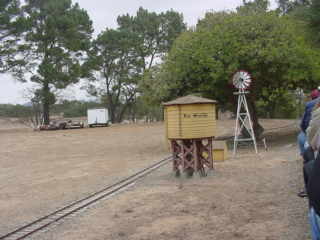
A Rio Grande water tower.
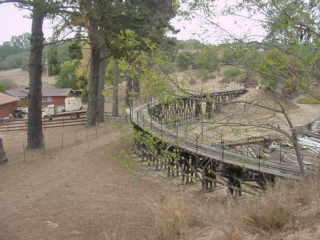
A final view of the Doug Chancey Memorial Trestle.
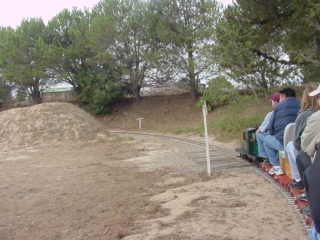
Taking the final curve before returning to the boarding area.
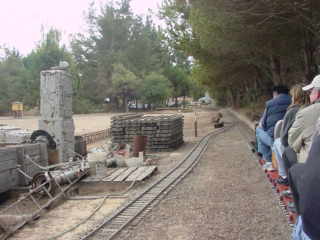
Another view along the line.
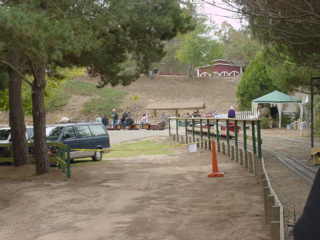
Our train returned to the boarding area.
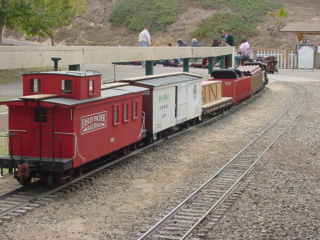
Display train at the boarding area, after which I detrained and headed to the restroom.

On the way back to the boarding area to meet Chris Parker, I thanked our hosts for the excellent trip.
The Journey Home 10/11/2009Chris and I took our rental car back to California Highway 1 which we took to Lompoc and once there, we followed the street trackage west and proceeded south to the junction with the road to Surf. Once there, we pulled into the Amtrak Surf Station parking lot and walked across the tracks to set up for the arrival of Pacific Surfliner 799.
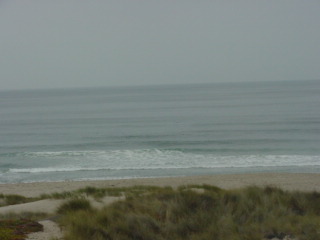
The surf at Surf.
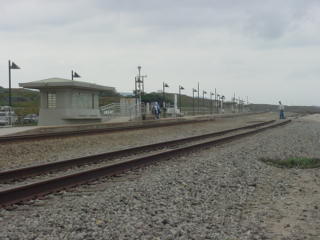
The Surf Amtrak station built in 2000.
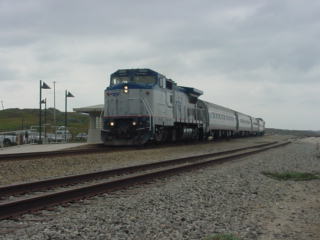
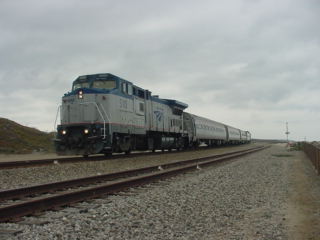
Pacific Surfliner 799 arrived and sat until departure time. I felt unwell again and with the bathroom on the far side of the train, I just had to wait and hoped I would make it there after the train left.
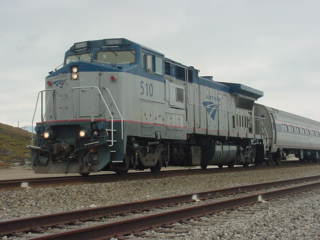
Amtrak B32-8 510 built by General Electric in 1991.
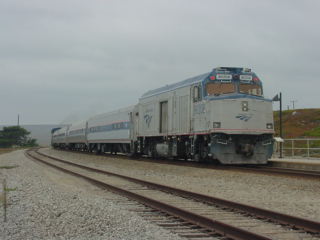
Pacific Surfliner 799 departed and I sprinted back to the bathroom. Just making it and relieved, we headed back to Lompoc where we filled the car with petrol then drove California Highway 1 to US Highway 101 to Goleta, our last stop of this trip.
South Coast Railroad Museum 10/11/2009The South Coast Railroad Museum focuses on the history, technology and adventure of railroading. Special emphasis is placed on the railroad's contributions to local history, on the Southern Pacific Railroad, and on the key historical role of the railroad depot in rural community life across America. The museum centerpiece is Goleta Depot, a country railroad station house built by the Southern Pacific in 1901 during completion of the Coast Route joining San Francisco and Los Angeles. Goleta Depot is listed on the National Register of Historic Places.
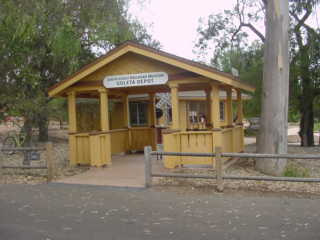
There was no parking so Chris Parker waited at the car while I went inside for a quick visit. This is the entrance to the museum.
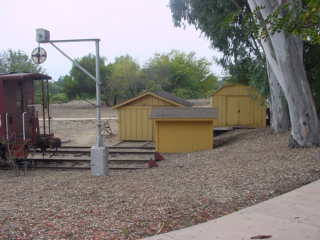
A wig-wag crossing signal.
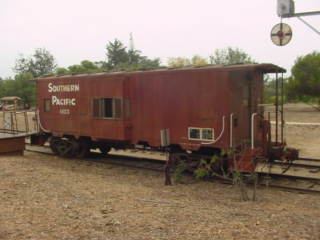
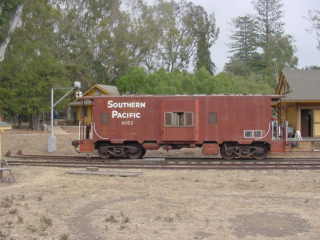
Southern Pacific bay window caboose 4023 built by Pacific Car and Foundry in 1961.
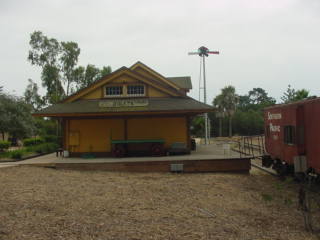
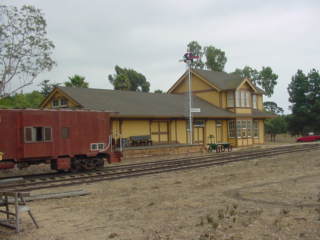
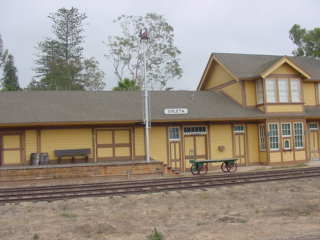
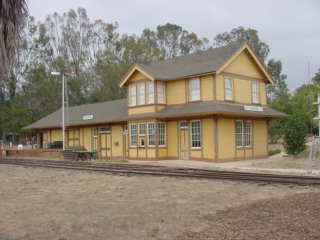
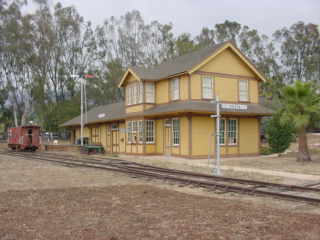
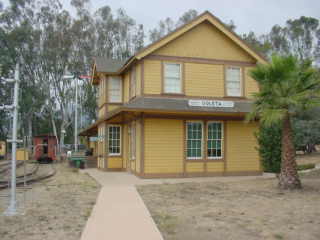
The Goleta Depot.
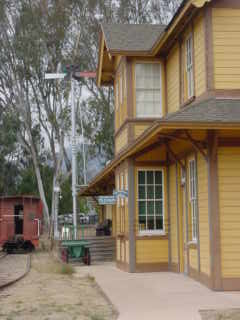
Looking down the track side.
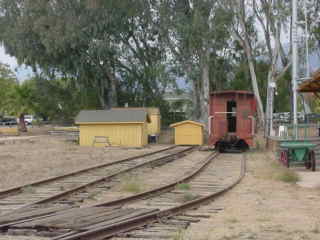
View down the tracks in front of the depot.
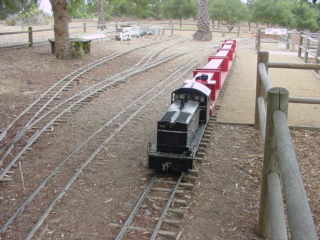
The 7.5 inch Goleta Shortline train on which rides are given at certain times of the year. I was very thankful of the nearby bathroom, which was the last event of the trip and I started to feel better. Now let uss look inside the Goleta Depot.
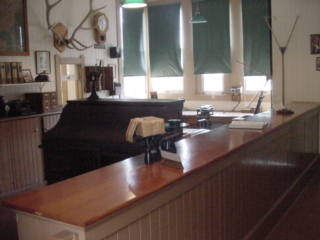
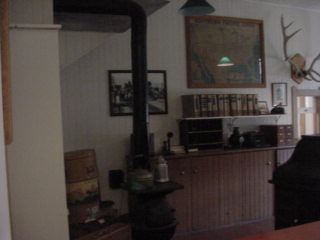
The ticket office.
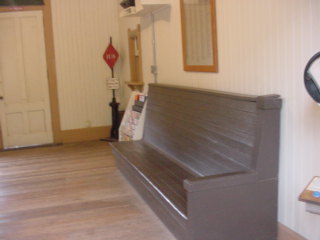
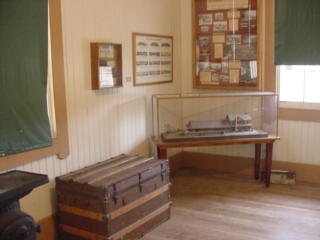
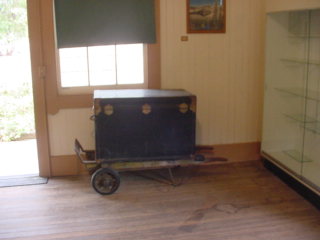
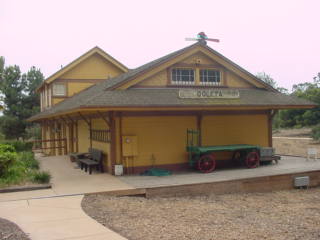
The waiting room. I walked back to the car and we drove back to Los Angeles Union Station. Chris Parker did an excellent job of driving and we returned there at 2:35 PM. I went up to Track 11 and waited for Pacific Surfliner 580 to board.

At 2:45 PM, Pacific Surfliner 580 boarded and took me on a quick trip back to Santa Ana, where I drove home finally feeling better. Despite everything, it had been a great trip to San Luis Obispo for the Central Coast Railroad Festival.
| RETURN TO THE MAIN PAGE |